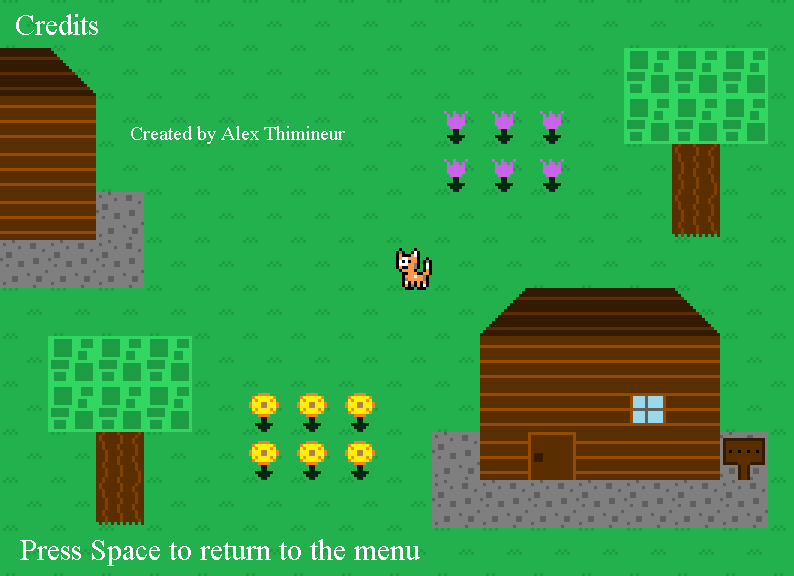Table of contents
Credits Screen
The credits screen handles the logic and graphics related to displaying the game’s credits to the user. It is loaded when the “CREDITS” option is selected form the game’s main menu.

The class file for it is CreditsScreen.java, which can be found in the Screens package.
Functionality
This screen is pretty limited. All it does is display the graphics shown in the above screenshot. When the space button is pressed, CreditsScreen will change ScreenCoordinator's game state back to MENU to load the MenuScreen back up.
if (Keyboard.isKeyUp(Key.SPACE)) {
keyLocker.unlockKey(Key.SPACE);
}
if (!keyLocker.isKeyLocked(Key.SPACE) && Keyboard.isKeyDown(Key.SPACE)) {
screenCoordinator.setGameState(GameState.MENU);
}
Super simple. You may notice that it first checks if the space key is not pressed, and if so will “unlock” the key (check out the KeyLocker class documentation here for more information on how that works). Then if the space key is unlocked and pressed, the screen returns back to the menu screen. The reason that this key locking mechanism is included is that the space button is pressed in order to intially go from the menu screen to this credits screen. Because of how fast the game loop iterates, before the space key is released, it would likely detect it as multiple presses – and as a result, one space press would go back and forth from menu to credits and back multiple times extremely quickly. By “locking” the space key when the CreditsScreen is initialized, and then only unlocking it when the space key is released, it forces the player to release and re-press the space key again rather than being able to hold it down. The MenuScreen also has this same functionality implemented with the space key for this reason.
Graphics
Like the MenuScreen class, the CreditsScreen class uses a Map (TitleScreenMap.java in the Maps package), which is the same type of Map class which is used when actually playing the main game. While any image could have been used, I thought it’d be more fun to use a map as the background.
All of the text shown on screen is created with various SpriteFont graphics defined in the class, which are setup in the initialize method.